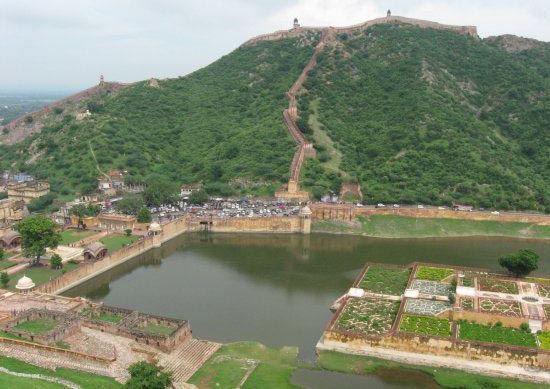Chamunda Mataji Temple

Information of Chamunda Mataji Temple, Chotila, Rajkot, Gujarat
Chamunda Mataji Temple is a holy worship place for Hindu pilgrims. It is situated on the peak of popular Chotila hill area of Rajkot city in Gujarat. The entire area of Chotila is popular for this temple. It is dedicated to goddess Chamunda, a fearsome Hindu divine mother. Being a renowned devout goddess, Chamunda Mataji Temple is packed with significant number of devotees throughout the year.
Chamunda Mataji Temple Religious Significance
Chamunda Mataji Temple has much religious significance, thus, devotees from all around the state visit the temple and give prayer to mother Chamunda for satisfying their desires. She is worshipped regularly through various religious activities such as aarti, bhog, mantra and prayers. The celestial atmosphere of the temple bound the devotees with certain spiritual appeal.
Mother Chamunda is regarded among the 64 personifications of fundamental power. Some of other personifications of mother Chamunda comprise goddess Kali, goddess Bahuchar and mother Amba among others. Furthermore, mother Chamunda is also regarded as the family divinity of various Hindu devotees.
Religiously, it is believed that goddess Chamunda cut the head of two demons named Mund and Chand throughout a war. Therefore, she have become popular as a furious goddess and a representation of female power. Presently, Chamunda Mataji Temple is famous for its special religious activity named Havan that occur during the festival of Navaratri. This religious activity is usually performed on the peak of the mountain Chotila. Navaratri festival is exceedingly celebrated with extreme interest in Chamunda Mataji Temple.
Chamunda Mataji Temple Mythology & History
The mythology of mother Chamunda was recorded in Durga Sapt Shati scripture. Legend states that once two demons named Chand and Mund commanded a huge forces with weaponry on being ordered by demon kings Shumbh and Nishumbh. On that time, goddess Chamunda emerged as Chandika from goddess Kaushiki, a Hindu divinity affiliated to power, in order to eliminate the two demons Chand and Mund. Chandika fought a ferocious battle with those demons and eventually slaughtered them. She took the slain heads of the two daemons to goddess Kaushiki. Goddess Kaushiki enormously contented with such victory and blessed Chandika. Afterwards, goddess Chandika was given upon the label of Chamunda for honouring the triumph over demons.
In later incident, goddess Durga made Matrikas, a group of goddesses from herself and with the assistance of Matrikas she killed the demon forces of Shumbh and Nishumbh. In this description, goddess Kali was defined as a Matrika who drunk all the blood of a demon named Raktabija. Raktabija had an advantage that whenever a drop of his blood fell on the ground a new demon will be born on that immediate spot. Therefore, after defeating such a strong demon, goddess Kali was also given the label of Chamunda.
In accordance with another story of Matsya Puran, lord Shiv created Chamunda along with other Matrikas for killing a demon named Andhakasura. He also possessed the similar ability of the demon Raktabija for creating demon from blood. Thus, Chamunda along with other Matrikas drank the every drop of blood from the demon Andhakasura and eventually supported lord Shiv to kill him. Having drunk the blood, Chamunda's appearance changed to blood red colour.
Chamunda Mataji Temple Architectural Significance
Situated in top of the hill, Chamunda Mataji Temple possesses unique architectural style. The reason for constructing the temple in such high altitude is to make certain physical stress for the devotees in order to worship goddess Chamunda. There is almost 700 stone made steps which lead to the temple. The steps was roofed by shade before five years and gradually damaged with time. Nevertheless, the entire walkway has been constructed again with fences and new shade for delivering comfort to the devotees.
- Andhra Pradesh Temples
- Assam Temples
- Bihar Temples
- New Delhi Temples
- Goa Temples
- Gujarat Temples
- Jammu and Kashmir Temples
- Karnataka Temples
- Kerala Temples
- Madhya Pradesh Temples
- Maharashtra Temples
- Odisha Temples
- Punjab Temples
- Rajasthan Temples
- Sikkim Temples
- Tamil Nadu Temples
- Telangana Temples
- Uttar Pradesh Temples
- Uttarakhand Temples
- West Bengal Temples